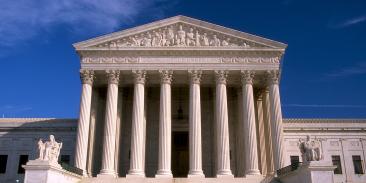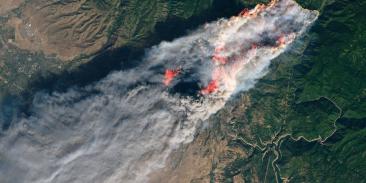SUPREME COURT WETLANDS DECISION SHOULD LEAVE MOST PROTECTION OF THE NATION'S WATER BODIES INTACT
“The ultimate effect of the Supreme Court’s decision on the Clean Water Act is to leave the Act’s protection of wetlands and other water bodies in place, but subject to proof that they do in fact have a ‘substantial nexus’ to downstream water quality,” said Tim Searchinger, a Senior Attorney with Environmental Defense. “The decision kicks the ball down the road and will create some major administrative headaches, but in the end, the protection of this country’s water bodies should change little.”
“Justice Kennedy’s concurring decision controls the case,” said Searchinger. “His opinion accepts that the Clean Water Act can protect wetlands and small streams, even those that flow only some of the time, if they as a class have a substantial nexus to downstream water bodies. Justice Kennedy agrees that wetlands in the Upper Midwest can protect against vast water quality problems in the Gulf of Mexico. What his opinion seeks is that the U.S. Army Corps of Engineers set forth that proof. The proof is there, and when it is presented, I am confident that the reach of the Clean Water Act will change very little.”
“The fact is that the vast majority of the water that reaches the ocean flows through small streams and adjacent wetlands. The water quality even of our coastal bays and Great Lakes depends on the filtration through these wetlands, and when that is demonstrated, Justice Kennedy indicated he would find that acceptable.”
“The plurality’s opinion has little ultimate significance, but it is difficult to fathom. It would exclude from the Clean Water Act the vast majority of rivers in the West, nearly all the country’s wetlands, and even the Florida Everglades, undermining more than 30 years of continuous protection by Republican and Democratic administrations alike.”
Tim Searchinger has been involved in briefing every significant wetland case in the Supreme Court, has frequently written and testified about wetlands, and is the author of a prize-winning book on defining wetlands.
With more than 3 million members, Environmental Defense Fund creates transformational solutions to the most serious environmental problems. To do so, EDF links science, economics, law, and innovative private-sector partnerships to turn solutions into action. edf.org
Latest press releases
-
Bill Would Explore Responsible Growth of Domestic Seafood
August 4, 2025 -
Legislation Introduced to Reverse Tax Hikes on Clean Energy
August 2, 2025 -
Groups File Lawsuit Challenging Trump EPA’s Delay of Protections Against Oil and Gas Methane Pollution
July 31, 2025 -
New study shows how sectoral emissions shape today’s warming and tomorrow’s risks
July 30, 2025 -
EPA Administrator Zeldin Delays Commonsense Methane Pollution Protections
July 29, 2025 -
NEW: U.S. Government’s Own Analysis Shows Repealing Tailpipe Pollution Standards Will Sharply Increase Gasoline Prices
July 29, 2025










